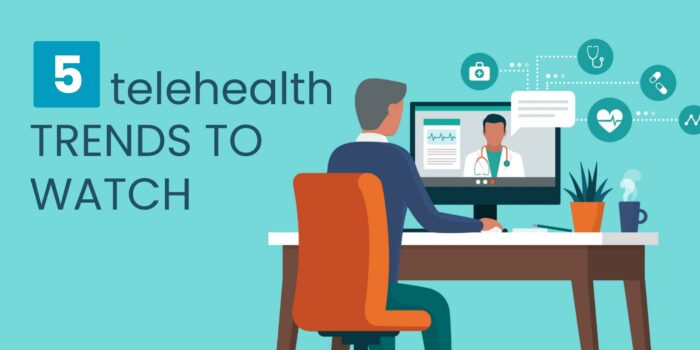 Employers that are interested in cutting their health care expenses are likely familiar with telehealth.
Employers that are interested in cutting their health care expenses are likely familiar with telehealth.
This is the process of communicating with a doctor via an app, or a webcam and computer. During the COVID-19 pandemic, telehealth usage skyrocketed, making it one of the most popular ways to receive health care.
As such, employers should stay apprised of notable telehealth trends to ensure they stay competitive and provide the best health care options to their employees. This article discusses five telehealth trends to watch for in 2021.
1. More Patient Utilization
As was stated, telehealth usage skyrocketed during the COVID-19 pandemic. To put that into figures, nearly half (43.5%) of Medicare primary care visits in April 2020 were made using telehealth, according to the Department of Health and Human Services. And even before the pandemic, year-over-year utilization was up 33% in early 2020, according to Medical Economics.
If these statistics aren’t enough to prove that telehealth is here to stay, look instead at market projections. The telehealth market is estimated to surmount $185 billion by 2026, according to Fortune Business Insights. Considering the market was only worth around $34 billion in 2018, this shows how much of an impact telehealth has made on the health care industry.
2. Increased Chronic Care Management
One of the most cited praises for telehealth is its convenience—no waiting rooms or commute. That makes it ideal for patients managing chronic conditions, since they need to check in with a doctor frequently. Chronic conditions include any ailment requiring at least a year of ongoing medical care, such as cystic fibrosis. Such conditions often require expensive treatments and medications, making telehealth a convenient way to reduce costs while still accessing quality care. As telehealth technology improves, more chronic care patients will likely take advantage of these services.
3. A Focus on Mental Health
More than 1 in 5 Americans have diagnosable mental disorders at some point in their lives, yet only about half of those individuals receive professional mental health treatment. This is partially due to limited specialist availability in a given area. Now, telehealth is changing that.
Through telehealth, patients can access mental health resources—including counselors and psychiatrists—regardless of where they live. Some services even allow patients to fill prescriptions electronically. Thanks to this convenience and an increased national dialog on mental health, employers can expect usage of these services to ramp up in the future.
4. Greater User Experiences
As telehealth usage increases, more competitors are entering the market. This means greater innovation and, often, vendor consolidation. Companies are now focusing on the user experience as a way to differentiate themselves.
Patients get tired of juggling different apps and websites just to access telehealth. To get around this, companies are looking to provide more comprehensive services all in one place. This means an online portal that utilizes technology like chatbots, video, calendar scheduling and text messaging. These and other quality-of-life improvements are anticipated in 2021.
5. Integrated Data Sharing
Services that integrate with each other are easier and more convenient to use—consider how some phone services allow users to import contacts from Facebook. That’s the direction telehealth is going.
Some telehealth apps are now integrating with other fitness apps. This integration allows the app to access data like heart rates and daily steps from a user’s smartphone. Paired with electronic health records, this kind of data can provide a clearer picture of a patient’s current health. As technology progresses, this type of data integration will likely increase.
Summary
Telehealth is dominating the health care sector, and that’s not going to change in 2021. Rather, employers can expect usage of these services to ramp up even more. With that in mind, employers that don’t currently offer telehealth should seriously consider doing so. Not only can it provide employees with much-needed access to health care, but it can also help cut costs.
Reach out to learn more about the benefits of offering telehealth.
This Benefits Insights is not intended to be exhaustive nor should any discussion or opinions be construed as professional advice. © 2021 Zywave, Inc. All rights reserved.

